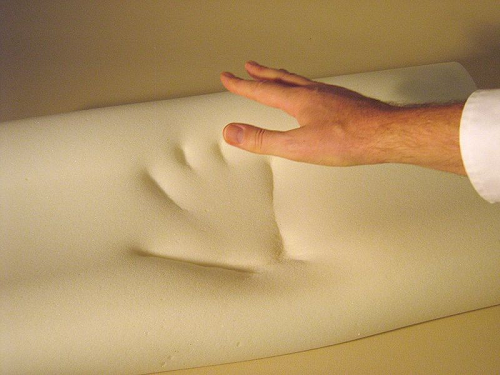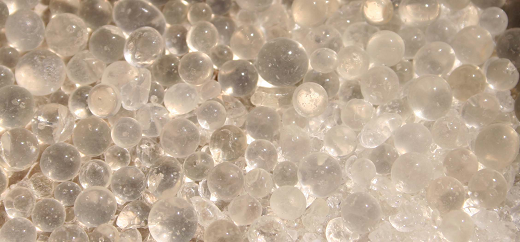
Flickr
If you have a spring mattress, then the chances are you’ve had it for years. Over time, a spring mattress can start to exhibit many flaws. With the external material weakening, you may start to feel the springs in quite a lot of detail as you try to sleep. As you can imagine (or as you already know), this is far from comfortable.
Replacing your mattress: leaving springs altogether?
People sometimes brush aside concerns about their mattress. After all, they can be pretty expensive to replace. And not only are they expensive, but you spend most of your time on the thing asleep, so you’re not really even fully conscious of the complaints. But the fact is that you spend about a third of your life in your bed. Even if most of that time is spent asleep, any problems you have with your mattress could become problems with your body soon enough. If your mattress is uncomfortable, then it will be harder to fall asleep. You’ll also risk doing mild injuries to your muscles over long periods of time. It may be a pain to replace your mattress, but it could be even more of a pain if you don’t replace it!
You’ve probably figured out by now that you don’t have to replace it with another spring mattress. You have probably heard about the wondrous and sometimes confusing world of memory foam mattresses. Now while maybe will sweat that foam mattresses are objectively superior to spring mattresses, this isn’t true. Everyone sleeps differently and everyone’s body is different. You may very well find that a high-quality spring mattress is right for you. The world of spring mattresses is also not as simple or limited as it may appear at first. Make sure you research all the different kinds to see if you’re actually better off sticking with springs.

Wikipedia
The bed itself
Don’t let yourself become too preoccupied by the mattress if you think your sleep problems stem from other sources. It could very well be that the bed frame itself isn’t that great. Even a very supportive mattress is going to suffer in effectiveness if the bed itself is a bit flimsy. (And yes, do remember that beds and mattresses are two different things in this sense!) If it’s not that supportive, or it makes too much noise, or moves around too much, you should consider getting a new one.
If you have other problems that are preventing you from getting a good sleep, then you need to tackle those first. Back problems might not be the fault of your mattress: you may want to see a doctor if you have persistent pain which is troubling your sleep.
Memory foam, part one: the traditional one
Back in the 1960s and 1970s, NASA was trying to develop a comfortable material that could absorb huge amounts of shock. They were needed for protection and comfort in both their aeroplanes and their spaceships. The result was temper foam, or, as we call it more often these days, memory foam. Applying pressure to it results in the shape of that object being imprinted slightly on the material. The idea in their use as mattresses is that they can better contour to a person’s specific body shape.
Traditional memory foam is the most widely available version of memory foam. In the 1990s, a company named Tempur-Pedic brought memory foam mattresses to the world. Tempur-Pedic still sells memory foam mattresses to this day and are the clear market leader. They prefer that you don’t refer to them as memory foam mattresses, though. You can give one a try at pretty much any bed retailer these days. Many people love the comfort that memory foam can provide, but it’s not for everyone. Try one out before introducing one to your bedroom!

Wikimedia
Memory foam, part two: the gel one
Here’s where memory foam gets a little confusing. You may have heard about gel beds, which work in a similar way to memory foam. The weird thing is that not even the mattress manufacturers themselves can seem to decide if a gel mattress is a memory foam mattress of not. Sometimes they’re advertised as a great alternative to memory foam. Sometimes they’re advertised as the best version of memory foam. Generally, a gel-based mattress is a memory foam mattress with gel infused into the memory foam.
Gel mattresses have a number of advantages to regular memory foam mattresses. One of the major complaints about the traditional ones is that they get hot. Really hot. This may be okay for someone who isn’t a very warm sleeper. But for someone who can’t sleep when it’s too hot, it presents a big problem. Gel mattresses are a lot cooler as the gel retains less heat than foam. There is still foam in the material though, so it will be a bit hotter than your average spring bed.

Wikipedia
Gel mattresses also tend to be cheaper than full-foam mattresses but there’s something you should keep in mind. These mattresses are much newer than regular foam mattresses. This means that there isn’t an amazing amount of data about how long they can last. So until manufacturers are able to tell how long they can last, you may be taking a small risk.
Memory foam, part three: the plant one
Plants? Huh? Yes; there are memory foam mattresses that are made mostly of plants. Don’t confuse this with the kinds of beds our ancestors slept in. (They used mattresses that were literally stuffed with vegetables.) A plant-based (or organic) memory foam mattress tends to use material like soy or bamboo.
These mattresses offer the same pressure-point benefits of the full-foam and gel-based alternatives. But they are far and away the cooler of the three. The material doesn’t retain much heat and has high breathability. They also have very low motion transfer. This basically means that if you’re sharing a bed with a partner that the nocturnal movements of one are unlikely to disturb the other.

Wikipedia
One of the problems with these mattresses is that they’re often not as ecological as they’re sometimes made out to be. You need to be very careful who you’re purchasing the mattress from. Due to the use of organic material, you run the risk of buying from a company who doesn’t get the material responsibly. So if you’re ecologically-minded, do your research on each mattress you’re interested in. If the manufacturer maintains soy plantations at the expense of local forests and wildlife, you may want to stay away.
